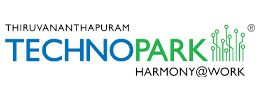Striving for the label ‘Smart City’ or ‘Knowledge City’ is no longer a simple administrative prerogative. It involves a lot more than public will for a city to build capacities and generate the momentum required to gain visibility as a ‘Knowledge City’ in the region. What can be even more demanding are the accompanying proactive measures needed to ensure that such a city retains and strengthens its prime position among the comity of knowledge cities of the world.
‘Knowledge Cities’ base their ability to create wealth depending on these three factors: (i) capability to generate ideas, (ii) exchange ideas, and (ii) influence knowledge networks. Both private and public sectors play an equal and complementary role in valuing and nurturing knowledge, supporting knowledge dissemination and discovery, and harnessing knowledge to create products and services that add value. Many developed cities around the world are now moving towards economies that are predominantly based on their knowledge capabilities. San Francisco, Singapore, Manchester, Montreal, Helsinki, Birmingham… the list goes on.
Today, each state or administrative district in every nation has a city labelled as a Knowledge City. There may be reasons for such categorisation; for instance, robust economic performance in knowledge-intensive sectors, conditions conducive to innovation and entrepreneurialism, availability of a skilled workforce, and presence of knowledge infrastructure, such as universities, libraries and laboratories. The challenges faced by each of these cities may be unique to their region, but then the connected world poses a different set of demands that every knowledge city can ill afford to ignore. Some of the demands that knowledge cities have to reckon with include:
- Integration with the globalised world
- Growing global competition among ‘knowledge capitals’
- Mobility of talent, firms and investment
- Emergence of disruptive technology and its changing role in research, learning and innovation
- A high degree of liveability – from infrastructure to cultural activities
The above unenviable set of challenges, along with a strong contention from Asian city economies, makes it worthy to observe how Melbourne strives to carve out a niche for itself and defend its position. In many ways, Melbourne’s challenges are not unlike our own Thiruvananthapuram’s, but there is one crucial aspect that makes a world of difference. Melbourne already is a burgeoning knowledge capital: The knowledge sector contributes more than 50% its gross regional product, with the financial services industry being the largest contributor. The city’s action plan envisages different goals, roles and initiatives that help Melbourne contribute to the growth of knowledge-intensive activities. From retaining and attracting knowledge talent, firms and investment to achieving recognition of the knowledge sector’s strength and value, Melbourne’s action plan is a case study in how to deal with emerging realisations proactively.
Melbourne’s holistic strategy helps in creating a flourishing knowledge economy and in building an entrepreneurial culture that can transform local economies and put it on the global map. For instance, Goal #2 focuses on Melbourne’s strong arts and culture scene, which are attractive to knowledge workers and add to the city’s liveability quotient. This focused approach enabled Melbourne to win recognition as the Most Admired Knowledge City at the Knowledge Cities World Summit (2013). Every aspect of the strategy acknowledges the importance of collaboration and partnership between the city, the knowledge sector, and the wider community.





